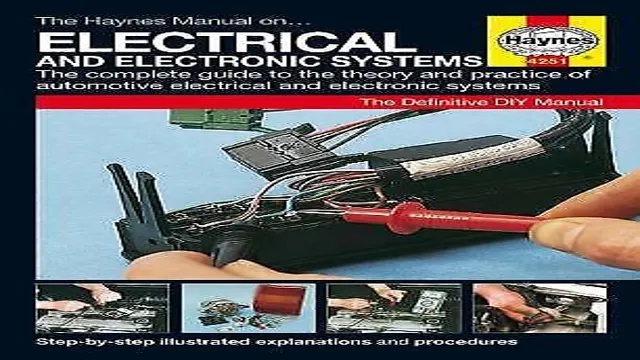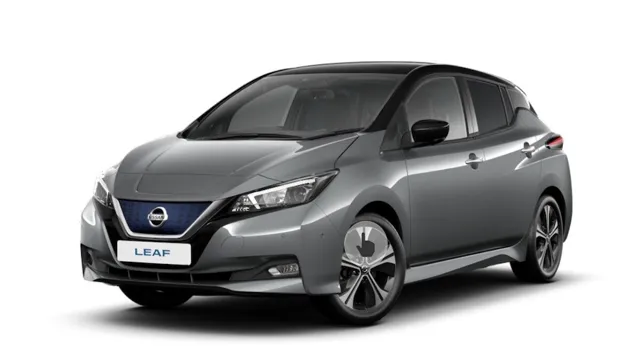Unleash the Power of Classic British Cars with Expert Guide to Electrical Systems
If you’re the owner of a classic British car, you probably know that these vehicles require special attention when it comes to their electrical systems. With their intricate designs and vintage components, these cars can be a little more challenging to maintain than their modern counterparts. But fear not – understanding classic British car electrical systems doesn’t have to be a daunting task! In this article, we’re going to dive in and explore everything you need to know about these unique systems.
From the basic principles of electricity to specific components found in British cars of yore, we’ll cover it all. Whether you’re a seasoned car enthusiast or just getting started with classic cars, you’ll find plenty of useful information here. So, if you’ve ever found yourself scratching your head over mysterious wires and confusing diagrams, read on – we’ve got you covered.
By the time we’re finished, you’ll have a much clearer understanding of how these systems work and how to keep them running smoothly. Let’s get started!
The Basics of Car Electrical Systems
Classic British car electrical systems can be complex, but understanding the basics is crucial for any car owner. The electrical system is responsible for powering all of the car’s electronics, from the headlights to the dashboard lights, and even the radio. The battery is the heart of the electrical system, providing power to start the engine and keeping all other electrical components functioning.
The alternator acts as a generator, recharging the battery while the engine is running. The wiring system is like the car’s nervous system, connecting all of the electrical components to the battery and alternator. It is important to regularly maintain these components to prevent electrical system failures.
Additionally, understanding the basics of car electrical systems can help diagnose problems if they arise and potentially save money on repairs. Overall, classic British car electrical systems play a crucial role in keeping your car running smoothly and should not be overlooked.
Components of Electrical Systems: Battery, Starter and Alternator
Car electrical systems are made up of various components including the battery, starter, and alternator. The battery serves as the energy source for the entire system, providing power to start the engine and run the electronics when the car is turned off. The starter uses the battery’s stored power to turn the engine over and begin the combustion process.
Once the engine is running, the alternator takes over and charges the battery while also providing power to the car’s electrical system. All of these components work together to keep the car running smoothly. It’s important to take care of these parts to ensure that the car stays reliable.
Regular vehicle maintenance should include checking the battery’s charge, verifying that the starter is functioning properly, and inspecting the alternator for any signs of wear and tear. By keeping these components in good condition, you can prolong the life of your car’s electrical system and avoid costly repairs down the road.

Understanding Electrical Wiring and Circuitry
Electricity can be a daunting topic, but it doesn’t have to be! When it comes to your car’s electrical system, it’s important to understand the basics. Your car’s electrical wiring and circuitry are responsible for powering everything from the headlights to the radio. The electrical system consists of three main components: the battery, the alternator, and the starter.
The battery is the powerhouse of the system, providing the initial electrical charge. The alternator is responsible for recharging the battery and keeping everything running. The starter is what gets the engine running, drawing power from the battery.
Understanding these components and how they work together is key to maintaining a healthy electrical system in your car. Don’t be afraid to ask a professional for help if you’re unsure about anything – it’s always better to be safe than sorry!
Classic British Car Electrical Systems
If you own a classic British car, understanding its electrical system is crucial to keeping it running smoothly. These cars typically have simple wiring systems with limited components that are relatively easy to troubleshoot and maintain. However, they can also be prone to electrical issues that require a bit of know-how to diagnose and fix.
One common problem with British cars is their reliance on Lucas electric components, which have a reputation for being unreliable. Additionally, these cars may have unique electrical features, such as positive-ground wiring, which can require specialized knowledge to work on. By familiarizing yourself with the electrical system of your classic British car, you can avoid costly repairs and keep your car on the road for years to come.
History of British Car Manufacturing
When it comes to classic British cars, their electrical systems were a unique feature that set them apart from their contemporaries. These cars often used a positive earth system in which the battery’s positive terminal is connected to the car’s body rather than the negative terminal. This type of system required a different approach to wiring and grounding, which led to the development of special electrical components and systems unique to British cars.
Additionally, some models used a dynamo instead of an alternator to charge the battery, which required the driver to rev the engine to produce enough electricity for the car’s electrical systems. Despite these quirks, classic British cars are still beloved by enthusiasts around the world for their unique blend of style, function, and distinctive engineering.
Common Electrical Issues in Classic British Cars
Classic British car electrical systems are notorious for causing headaches for owners. Some of the most common issues include faulty wiring, corrosion, and failing components like alternators and generators. When it comes to fixing these issues, it’s essential to have a good understanding of the car’s electrical system.
Often, the easiest fix is to replace faulty components or clean corroded connections. However, in some cases, re-wiring may be necessary. Regardless of the issue, it’s always best to tackle electrical problems early on before they cause more significant damage to the car.
By staying on top of maintenance and addressing issues as they arise, classic car enthusiasts can enjoy their vehicles for many years to come.
Unique Features of Electrical Systems in British Cars
Classic British car electrical systems are renowned for their uniqueness. Firstly, the wiring in a British car is color-coded with a different scheme than other cars originating from North America or Japan. Before the 1970s, British cars used a positive ground system whereas other cars used a negative ground system.
It is due to this system that British cars have a different polarity on the battery, creating major differences in how the electrical components work. Additionally, British cars are known for having a variety of switches and relays to control the different functions of electrical appliances. This unique system can cause difficulties when working on these cars for someone unfamiliar with their complexity.
The system is certainly different from other brands, but many classic car enthusiasts cherish the uniqueness and the challenge it brings when maintaining and restoring these cars.
Maintaining and Troubleshooting Classic British Car Electrical Systems
If you’re a proud owner of a classic British car, then you know that keeping its electrical system in good working order is paramount to maintaining its performance and overall longevity. But with intricate wiring systems, outdated components, and a lack of modern features, it can be a daunting task. However, with the right understanding and some troubleshooting skills, you can ensure that your classic British car’s electrical system is functioning optimally.
Start by familiarizing yourself with the wiring diagram to understand the electrical circuits, test fuses and relays, and give particular attention to ground connections. When troubleshooting electrical problems, it’s essential to use a systematic approach and rule out one issue at a time. Some common problems include corroded wires and connectors, damaged solenoids, and faulty ignition switches, to name a few.
With the right approach and some troubleshooting know-how, you can keep your classic British car’s electrical system running like a charm, ensuring that it’s always road-ready when you want to take it for a spin.
Routine Maintenance Tips
Maintaining and Troubleshooting Classic British Car Electrical Systems Classic British cars are always a sight to behold, but they require a lot of dedication to keep them running smoothly. One of the most important aspects of maintaining these beautiful machines is keeping their electrical systems in good condition. Electrical problems can be incredibly frustrating and difficult to troubleshoot, but there are a few things you can do to ensure your car’s electrical system is in top shape.
First, regularly check and clean your battery terminals to prevent any corrosion buildup. Secondly, inspect your fuses regularly to make sure they are not blown or damaged. Finally, familiarize yourself with your car’s wiring and electrical components, and invest in a good multimeter- it can be a great tool for diagnosing problems.
With these tips and a little bit of patience, you can keep your classic British car’s electrical system running smoothly for years to come.
Troubleshooting Common Electrical Issues
Maintaining and troubleshooting classic British car electrical systems can be quite a daunting task, but there are a few common issues that you can easily troubleshoot on your own. The most common electrical issue that vintage British cars tend to face is a dead battery. This can be due to a faulty alternator, loose connections, or a dead cell in the battery.
To diagnose the problem, you can test the voltage using a multimeter or take the battery to a professional for testing. Another common issue is blown fuses, which can cause various parts of the electrical system to stop working. It’s important to make sure that the correct amperage fuse is used for each circuit to prevent unnecessary electrical damage.
Faulty switches and relays can also cause issues, and it’s important to check for loose connections, burn marks, or signs of wear and tear. By regularly maintaining your classic car’s electrical system and troubleshooting common issues, you can help ensure that your vintage British car runs smoothly and reliably on the road. So, if you want to keep your classic car purring like a kitten, don’t forget to check its electrical system for any potential issues.
Conclusion: Enjoying Your Classic British Car
In conclusion, understanding classic British car electrical systems can be a daunting and often frustrating experience. However, with the right knowledge and approach, it can also be a rewarding and satisfying journey. Think of it like mastering a complicated puzzle – once you’ve cracked the code, you’ll have a sense of accomplishment and pride that no modern, plug-and-play car can replicate.
So embrace the challenge, take it one wire at a time, and don’t be afraid to ask for help. Who knows? With a bit of patience and ingenuity, you might just be able to bring that vintage British beauty back on the road where it belongs!”
FAQs
What are the common electrical issues in classic British cars?
Classic British cars are known for their problematic electrical systems, the most common issues being faulty wiring, corroded connectors, and weak batteries.
How can I maintain the electrical system of my classic British car?
Regular inspection and cleaning of connectors, fuses, and batteries can help prevent electrical issues. It is also advisable to upgrade your old electrical system with modern wiring and components.
Is it possible to convert the electrical system of a classic British car to a modern one?
Yes, it is possible to swap the outdated electrical system with modern wiring and components. However, it involves a significant amount of work and may affect the car’s originality and value.
Can I install an aftermarket stereo in my classic British car without damaging its electrical system?
Yes, you can install an aftermarket stereo in your classic British car, provided that you use a wiring harness adapter and follow the recommended installation instructions. It is also advisable to consult a professional installer.



